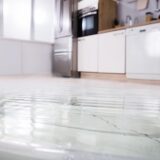
One of the most deceptive things about water damage repair is how serious it can potentially be. Many people make the mistake of thinking water damage is only bad if they enter their home and see water coming up to waist level or end up sitting on the roof of their home, awaiting flood rescue.
The truth is that even when water damage appears minimal or is even invisible to plain scrutiny, that doesn’t mean it’s harmless. On the contrary, water damage can be the prelude to many serious problems, like mold infestation, which is why you should deal with it quickly when you see it. But how does it work?
Acknowledge The Issue
The first and most important step is acknowledging that there is a problem that needs fixing. For example, suppose the source of water damage is a leaky roof. In that case, this damage will continue with every rainstorm as long as you ignore the problem. And that means the situation will become more significant, more expensive, and possibly more hazardous to health, as long as the property owner pretends the issue isn’t there.
If you see “bubbling” on the walls, or the ceiling, discoloration, or even the eroding of wall and ceiling paint, or the actual drywall itself, treat this as an immediate problem. Don’t let it get worse.
Locate The Water Issue (Leak Detection)
This may require professional intervention in some cases, depending on the circumstance. For some, the answer will be having roofers inspect the roof and confirm that shingles are missing or flashing is damaged. For others, this may involve needing a plumber to track down a leak in a pipe.
For others, however, the issue may be as simple as the discoloration or wall damage is where a pipe has burst. Hence, it’s just a matter of turning off the water and making sure plumbers repair the damage before restoring water flow to the property.
Dry Out The Area
This is crucial and will always be done thoroughly by professionals experienced in water damage repair. It’s not enough to remove the visible water from an affected area; the moisture must also be removed. If it isn’t, that moisture can continue to damage support beams, electrical wiring, or anything else in the area.
In the worst-case scenarios, a combination of a dark environment with dampness allows mold infestation to begin, and that’s an entirely different—and much more expensive—problem that needs to be dealt with.
Hire a Water Damage Restoration Company To Conduct The Repairs
This is wholly dependent on the scale of the damage. For example, water damage that is small, localized, and got an early response may only require re-patching a particular section of wall or ceiling with new drywall once a burst pipe has been repaired.
On the other hand, an entire ceiling or wall may need to be torn down and replaced if the damage is more extensive, especially if systems such as electrical wiring have also been compromised.
If you need an assessment of water damage in your home, contact us. We can look at the scope of the damage, locate the source of the problem and ensure that all water has been removed before repairs commence.
